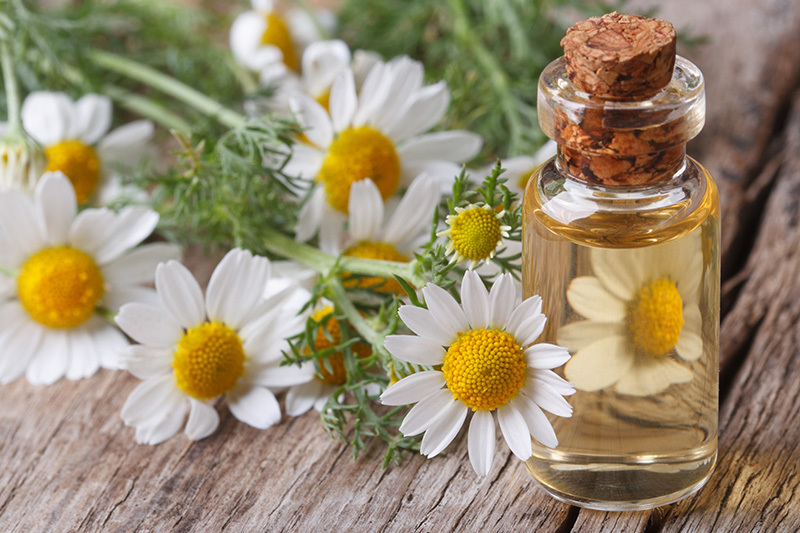Pro Tips for Long-Lasting Poinsettias
Posted on 24/08/2025
Pro Tips for Long-Lasting Poinsettias
Poinsettias (Euphorbia pulcherrima) are iconic symbols of the holiday season, filling homes, offices, and public spaces with their vibrant red, white, pink, or mottled bracts. As beautiful as they are, many people find that their poinsettias wither or drop their leaves soon after purchase. If you want your poinsettias to thrive throughout the holidays and even into the following year, adopting the right care strategies is crucial.
In this comprehensive guide, you'll learn expert tips to keep poinsettias healthy and long-lasting. From selection and placement to watering, feeding, and troubleshooting, these insights will help your plants remain lush and beautiful well beyond the festive season.
Understanding Poinsettias
Before diving into poinsettia care tips, it's important to get familiar with the plant itself. The brilliant "flowers" are actually colored bracts, or modified leaves, surrounding tiny yellow true flowers called cyathia. Native to Mexico, poinsettias thrive in warm, sunny environments.
Poinsettias are not as delicate as many believe, but they do have specific requirements. Understanding these will make it easier to maintain long-lasting poinsettias and enjoy their color far beyond Christmas.

How to Select a Healthy Poinsettia
Long-lasting poinsettias begin with careful selection at the nursery or store. Here are essential steps to choosing the best plant:
- Check the true flowers: Look for plants with tight, yellow buds at the center. Open, past-their-peak flowers mean the plant is already aging.
- Inspect the bracts: Bracts should be brightly colored, with no signs of spots, wilting, or tearing.
- Examine the leaves: Healthy leaves should be deep green and dense from the top to the bottom of the stem.
- Check for pests: Avoid limp, sticky, or insect-ridden poinsettias.
- Avoid chill or drafts: Select plants displayed away from cold doors or windows and out of direct drafts.
Proper Placement: Light and Temperature Tips
Where you put your poinsettia is key to its longevity. Follow these expert tips for the perfect location:
- Bright, indirect light: Poinsettias enjoy lots of natural light but cannot tolerate direct midday sun, which can scorch the bracts and foliage. A lightly shaded spot near an east or south-facing window works best.
- Consistent warmth: Place your poinsettia in a room with temperatures between 65-75?F (18-24?C) during the day and not dropping below 60?F (15?C) at night.
- Avoid cold and heat sources: Don't situate your plant near drafts, open doors, or heating vents, as rapid temperature fluctuations cause leaf drop.
Remember: Temperature stress is one of the main reasons poinsettias lose leaves prematurely.
Watering for Longevity
Over- or under-watering is the most common mistake with poinsettias. Here are professional tips for watering your plant correctly:
How to Water Poinsettias Properly
- Test the soil: Insert your finger about 1 inch into the soil. If it feels dry, it's time to water.
- Water at the base: Pour water slowly onto the soil (not the bracts or leaves) until it just begins to drain from the bottom.
- Never let the plant sit in water: Remove excess water from the saucer or decorative sleeve to prevent root rot.
- Frequency: Most poinsettias need watering once or twice a week, depending on indoor environmental conditions.
Don't: Let the soil get soggy or completely dry out. Each can stress the plant and shorten its life.
Feeding and Fertilizing for Healthy Poinsettias
While new poinsettias don't need much fertilizer, long-term success requires balanced feeding after the blooming period.
When and How to Fertilize
- Wait until blooming ends: Do not fertilize while the plant is actively blooming. Begin when growth resumes in spring.
- Use balanced fertilizer: A water-soluble houseplant fertilizer diluted to half strength works well. Look for blends like 20-20-20.
- Monthly feedings: Fertilize once a month during the growing season (spring and summer).
Avoid over-fertilizing, which can burn roots or encourage leggy, weak growth.
Humidity and Drafts: Two Silent Killers
Many homeowners overlook humidity and airflow, but both are crucial for long-lasting poinsettias.
- Humidity: Poinsettias like moderate humidity. If your home is dry (common in winter), set the pot on a tray of pebbles and water, ensuring the pot sits above the water line.
- Drafts: Keep poinsettias away from both cold drafts (which cause leaf drop) and hot air from radiators, fireplaces, or vents.
Pro Tip: Group poinsettias with other houseplants to create a microclimate with higher humidity.
Pruning and Reblooming: Year-Round Poinsettia Care
Poinsettias can be kept as year-round houseplants and even encouraged to rebloom for the next holiday season.
Post-Holiday Pruning
- In late winter or early spring: When flower bracts fade and drop, cut the stems back to about 4-6 inches above the soil.
- Continue regular watering: Don't let the plant dry out, but reduce watering since the plant is dormant.
- Encourage new growth: Move the plant outdoors after danger of frost (if your climate permits), or continue growing in a sunny indoor location.
How to Get Poinsettias to Bloom Again
To promote colorful bracts for the next year, follow these critical steps:
- Short-day treatment: Poinsettias need long nights and short days starting in early fall (typically late September or early October). Place the plant in complete darkness for 14-16 hours each night for 8-10 weeks. A closet or box works well.
- Bright light during the day: Move your plant into a brightly lit area during the day, mimicking natural sunlight conditions.
- Resume normal care: Once bracts show good color (usually by Thanksgiving), return the plant to its usual location and routine.
Patience is key for encouraging reblooming poinsettias!
Common Poinsettia Problems and How to Fix Them
1. Leaf Drop
- Causes: Sudden temperature changes, overwatering, underwatering, or exposure to drafts.
- Solution: Stabilize temperature, water only when the soil feels dry, and keep away from drafts and heat sources.
2. Wilting or Yellow Leaves
- Causes: Overwatering or poor drainage.
- Solution: Ensure the pot has drainage holes and never let the plant sit in water. Allow excess water to drain thoroughly.
3. Fading Bracts
- Causes: Prolonged exposure to direct sunlight or lack of light.
- Solution: Place in bright, indirect light and avoid direct sun's rays.
4. Pests
- Common pests: Whiteflies, spider mites, and aphids may infest weakened poinsettias.
- Solution: Rinse leaves with water, use insecticidal soap, or introduce beneficial insects such as ladybugs.
Decorative Tips for Displaying Poinsettias
Long-lasting poinsettias aren't just for tabletops! Here's how to use poinsettias creatively in your decor:
- Group plants in varying sizes in baskets or decorative containers for a lush, dramatic effect.
- Mix with greenery: Pair poinsettias with ferns, evergreens, or ivy for contrast.
- Use as centerpieces or entryway highlights -- these vibrant plants make any space festive and bright.
The Truth About Poinsettia Toxicity
Contrary to popular myth, poinsettias are not deadly poisonous to pets or humans. They can cause mild stomach discomfort if large quantities are ingested and may cause skin irritation in sensitive individuals. Keep plants away from pets and children as a precaution, but don't worry about severe toxicity.
Expert Advice Recap: Best Practices for Long-Lasting Poinsettias
- Start with a healthy plant: Choose resilient, well-branched poinsettias with bright bracts.
- Mind light and temperature: Provide bright, filtered light and stable temperatures.
- Water cautiously: Allow the soil to dry slightly between soakings; never drown or neglect your plant.
- Protect from drafts and dry air: Humidity helps, while drafts and temperature swings harm.
- Fertilize correctly: Feed only after blooming and as new growth resumes.
- Commit to year-round care: Prune after bracts drop and follow daylight protocols for reblooming.

Frequently Asked Questions about Poinsettia Care
Can I plant my poinsettia outdoors?
If you live in USDA zones 9-11, you can plant poinsettias outside after frosts have passed. In cooler regions, enjoy them indoors.
Why are my poinsettia leaves turning yellow?
Usually due to overwatering or poor drainage. Adjust your watering routine accordingly.
How can I make my poinsettia last longer after Christmas?
Provide it with bright, indirect light, avoid drafts, fertilize in the spring, and consider following a reblooming schedule.
Conclusion: Enjoying Poinsettias Beyond the Holidays
With proper selection, placement, watering, and continued care, poinsettias can last much longer than a few short weeks. In fact, these gorgeous plants can serve as year-round houseplants or return as holiday showpieces every winter with a little extra attention.
For vibrant and long-lasting poinsettias, remember to provide gentle light, stable temperature, cautious watering, and occasional fertilizer. Invest in their year-round well-being by pruning and carefully managing light conditions as the holidays approach.
With these expert care strategies, your poinsettias will remain bright, healthy, and beautiful for seasons to come.
Your Beautiful, Long-Lasting Poinsettias Await!
Follow these pro tips year after year, and enjoy dazzling poinsettias that outshine the rest--long after the last holiday ornament is put away.
Latest Posts
Pro Tips for Long-Lasting Poinsettias
Enhance Your Office with These 10 No-fuss Plants
Surprise them with the finest birthday flower selection





